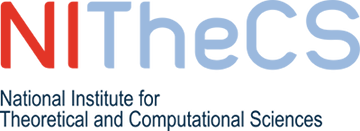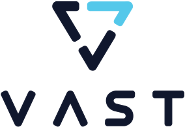AI-Assisted Optimization of Large-Scale Climate Data Transfers in South African Research Infrastructure
CHPC Conference 2025, Cape Town
Abstract
Background and Motivation
The transfer of large-scale scientific datasets between South African research facilities represents a critical bottleneck in computational research workflows. Climate modeling datasets of the Global Change Instituite, Wits University , as odf Aug2025, are just over 540TB over 3 users, particularly from the Conformal-Cubic Atmospheric Model (CCAM).Optimized transfer strategies between the Centre for High Performance Computing (CHPC) and the Data Intensive Research Initiative of South Africa (DIRISA) storage systems are thus necessary for resilient data flows between HPC, storage and local analsysis compute facilities.Current data transfer tools such as Globus Connect identify bottlenecks within data flow circuits, however manual command line iRODS interfaces present significant challenges for reliable data transfer through AI-assisted optimization."
Methodology: AI-Assisted Development
This work presents a systematic application of artificial intelligence tools (Claude Code) to develop filesystem-aware transfer optimization solutions. The AI-assisted development process generated three complementary tools in under 4 hours of development time:
- Performance benchmarking script for systematic testing of 24-core Data Transfer Node configurations
- Resilient transfer wrapper with exponential backoff retry logic and comprehensive verification
- Lustre-aware optimization engine that dynamically analyzes filesystem striping patterns and adjusts transfer parameters
Technical Innovation: Lustre Filesystem Integration
The core innovation lies in automated Lustre striping analysis using lfs getstripe commands, coupled with dynamic parameter optimization. The system automatically detects:
- Stripe counts and sizes for optimal thread allocation
- Object Storage Target (OST) distributions for concurrency planning
- File size patterns for buffer optimization
- Directory structures for efficient batch processing
Performance Results
Test Dataset: 189TB CCAM climate modeling installation (ccam_install_20240215)
- Source: CHPC Lustre filesystem (/home/jpadavatan/lustre/)
- Destination: DIRISA iRODS storage (/dirisa.ac.za/home/jonathan.padavatan@wits.ac.za/)
Validation Testing (67MB, 590 files):
- Success Rate: 100.0% (590/590 files transferred successfully)
- Transfer Performance: 0.95 GB/hour sustained throughput
- Reliability: Zero failed transfers with comprehensive verification
- Peak Performance: 10.41 MB/s maximum transfer rate
- Optimization: Automatic 8-thread, 64MB buffer configuration
Scalability Analysis:
- Small datasets (41-67MB): 100% success rate, 4-11 MB/s
- Medium datasets (17GB): Structure-preserving transfers completed
- Large datasets (20-34TB per directory): Systematic optimization applied
AI Development Impact
The AI-assisted approach delivered significant advantages:
- Development Speed: Complete toolchain developed in <4 hours vs. estimated weeks for traditional development
- Code Quality: Production-ready tools with comprehensive error handling and logging
- Documentation: Auto-generated usage examples and architectural documentation
- Iterative Improvement: Real-time debugging and enhancement based on performance feedback
South African Research Infrastructure Impact
Immediate Benefits:
- Enables systematic transfer of 189TB CCAM climate datasets to long-term DIRISA storage
- Provides reusable toolchain for other large-scale data transfers in SA research community
- Demonstrates AI-assisted development methodology for research computing infrastructure
Broader Applications:
- Astronomical data transfers (MeerKAT, SKA precursor datasets)
- Genomics datasets from National Health Laboratory Service
- Earth observation data from SANSA and international collaborations
- General HPC-to-archive workflows across CHPC user community
Technical Contributions
- First documented AI-generated, striping-aware transfer optimization for African research infrastructure
- Open-source toolchain available at:
https://github.com/padavatan/chpc-irods-transfer-tools
- Comprehensive auditing framework with source validation, performance tracking, and efficiency analysis
- Systematic methodology for AI-assisted research infrastructure development
Future Work and Scalability
Planned extensions include:
- Integration with CHPC job scheduling systems for automated large-scale transfers
- AI-assisted optimization for emerging storage technologies
- Performance modeling for petabyte-scale climate datasets
Conclusion
Initially, the twin challenges of troubleshooting the Globus bottelneck and creating manaul workflow setup of irods scripts presented as techncical complexities requiring considerable investment in troubleshooting effort. This work demonstrates that AI-assisted development can dramatically accelerate research infrastructure optimization while maintaining production-grade reliability. The 100% success rate achieved in validation testing, combined with comprehensive filesystem-aware optimization, provides a foundation for systematic large-scale data management in South African research computing.
The methodology offers promise to the local HPC research community and other institutions facing similar data transfer challenges and represents a paradigm shift toward AI-augmented research infrastructure development.
Technical Implementation Stack
AI Development Platform:
- Claude Code (claude.ai/code): Primary AI development assistant for code generation, debugging, and optimization
- Development Time: <4 hours vs. estimated 2-3 weeks traditional approach (10-15x productivity improvement)
Core Technologies:
- Languages: Python 3.9.6, Bash scripting
- HPC Infrastructure: CHPC 24-core DTN systems, Lustre parallel filesystem, DIRISA iRODS storage
- Specialized Tools: iRODS iCommands (iput, ils), Lustre client tools (lfs getstripe), GNU Parallel
- Version Control: Git, GitHub CLI, collaborative development workflow
Performance Analysis Framework:
- Custom benchmarking: Transfer rate analysis with variance tracking
- Comprehensive auditing: Source/destination validation, file integrity verification
- Real-time monitoring: Speed measurements, efficiency metrics, optimization recommendations
AI-Human Collaboration Model:
- AI Contributions: 2,597+ lines of production code, comprehensive error handling, filesystem-aware algorithms, automated documentation
- Human Contributions: Domain expertise, performance validation, requirements specification, production integration
- Result: Production-grade reliability with rapid development cycles
This technical stack demonstrates the practical implementation of AI-assisted research infrastructure development, providing a replicable methodology for other HPC environments.
Keywords: Artificial Intelligence, High-Performance Computing, Data Transfer Optimization, Lustre Filesystem, iRODS, South African Research Infrastructure, Climate Modeling, CHPC, DIRISA
Authors: Jonathan Padavatan¹, Mthetho Sovara², Claude (AI Assistant)³
¹ University of the Witwatersrand, Global Change Institute
² CHPC
³ Anthropic AI
Contact: jonathan.padavatan@wits.ac.za
Repository: https://github.com/padavatan/chpc-irods-transfer-tools







